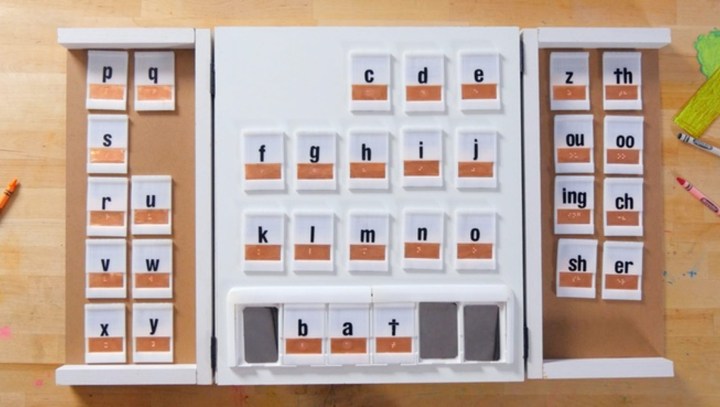
90 percent of people who are Braille literate are employed, while adults only one in three blind adults is who do not read Braille are employed. Many don’t learn Braille due to lack of resources. Realizing this, master’s student Alex Tavares looked for a new method and tool for teaching Braille that would allow students to do so autonomously.
The Read Read is relatively simple and easy to use, featuring large tiles with Braille letters, which students can arrange in slots to form words. When a student places a tile in a slot, an audio file plays the phonetic sound of the letter. When a word is formed, the audio files sound out the word.
A twelve-week trial was recently held at the Perkins School for the Blind where students were given the opportunity to test the device.
“Students were extremely engaged with the Read Read,” Tavares told Digital Trends. “One student, who is blind and on the Autism spectrum, had struggled to learn the first ten letters of the alphabet all year long. Being on the Autism spectrum meant that taking traditional direct instruction was extremely challenging, and left the student unable to learn Braille. The immediate audio feedback and exploratory platform provided by the Read Read allowed the student to practice Braille with minimal guidance, and learn the first ten letters of the alphabet after only two days, practicing less than 20 minutes each day.”
Tavares and his team are now seeking support and funding for the Read Read on Kickstarter. They hope to raise $273,000 to give the tool to 400 students. Individual devices can also be purchased for $495.
Correction: A previous version of this article stated that about 8.5 percent of blind students receive sufficient instruction to learn Braille. The American Foundation for the Blind suggests, “We have found no recent, reliable source (or any standardized definitions) for literacy or Braille literacy rates among students or adults who are blind/visually impaired.”


